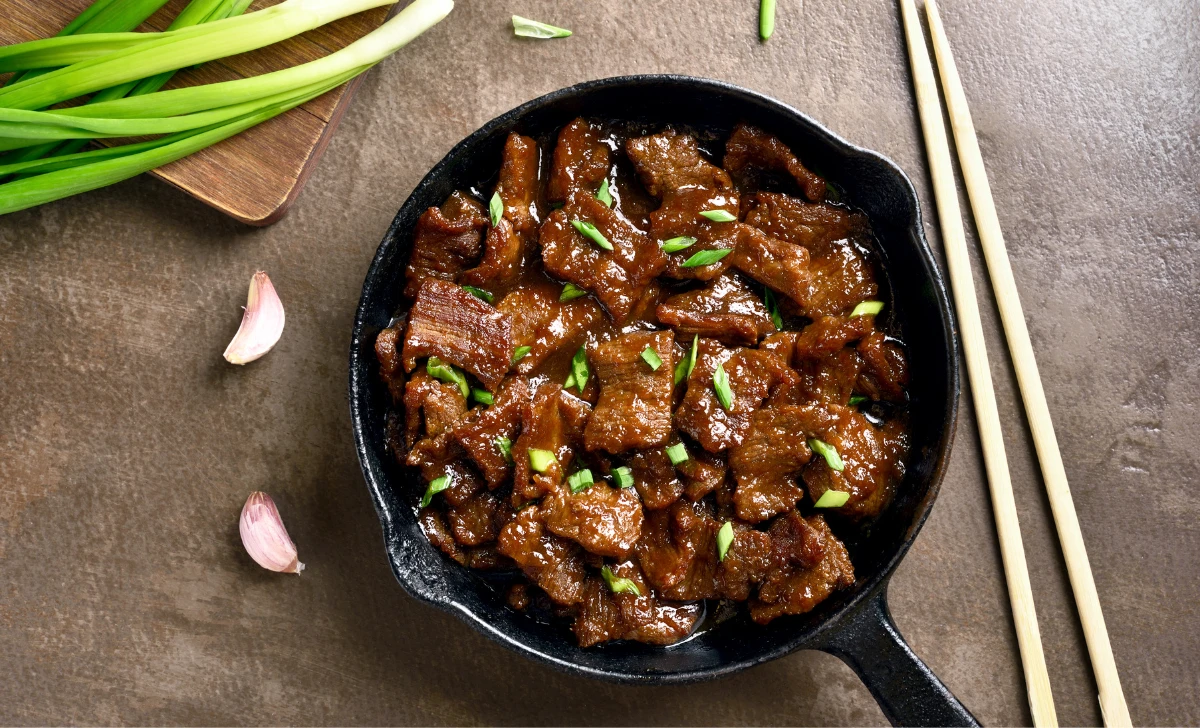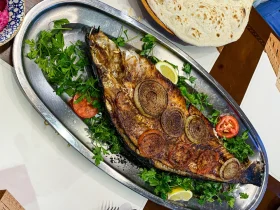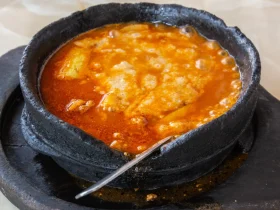Are you craving a mouthwatering Asian-inspired dish that bursts with flavors and leaves you wanting more? Look no further! In this article, we’ll delve into the delightful world of Mongolian Beef. Get ready to embark on a culinary journey where tender strips of beef are bathed in a savory and slightly sweet sauce that’s guaranteed to tantalize your taste buds. Whether you’re a seasoned chef or a novice in the kitchen, this easy-to-follow recipe will have you cooking up a storm and impressing your friends and family in no time. So, let’s fire up those woks and get cooking!
[ez-toc]
History
Mongolian Beef, despite its name, does not have its origins in Mongolia. The history of this delectable dish can be traced back to Taiwan, where it first gained popularity before spreading to other parts of the world. Let’s take a journey through time and explore the fascinating history of Mongolian Beef.
Origins in Taiwan
The roots of Mongolian Beef can be found in the vibrant culinary scene of Taiwan during the mid-20th century. Taiwanese chefs and cooks, known for their innovative approach to blending flavors, experimented with different ingredients and cooking techniques. It was during this period that the first iteration of Mongolian Beef came into existence.
The exact reason behind the dish’s name remains a mystery, as it has no historical connection to Mongolia or its cuisine. Some theories suggest that the term “Mongolian” was used to make the dish sound exotic and adventurous, appealing to the Western audience as Asian-inspired cuisine gained popularity globally.
The Rise of Asian-American Cuisine
Mongolian Beef began to gain traction outside of Taiwan in the 1970s as Asian-American cuisine surged in popularity. As Chinese immigrants settled in the United States, they brought with them their culinary traditions and adapted them to suit the American palate. Dishes like Mongolian Beef found their way onto the menus of Chinese-American restaurants, further popularizing the unique blend of flavors and textures.
The Influence of American-Chinese Restaurants
American-Chinese restaurants played a significant role in popularizing Mongolian Beef in the West. These establishments catered to the local taste preferences, often offering dishes with a fusion of Chinese, American, and other Asian flavors. Mongolian Beef, with its tender beef slices and savory sauce, proved to be a hit among customers seeking a balance between sweet and savory flavors.
From Local Gem to Global Sensation
With the spread of Chinese cuisine across the world, Mongolian Beef became a staple in Chinese restaurants everywhere. Its popularity soared due to its irresistible taste and straightforward preparation. The dish’s ability to cater to various dietary preferences and its versatility further contributed to its global appeal.
Modern Variations and Adaptations
As the world became more connected through travel and the internet, variations of Mongolian Beef emerged to suit different tastes and preferences. Home cooks and professional chefs alike put their unique spin on the dish, incorporating additional ingredients and spices to enhance its complexity.
Today, Mongolian Beef is celebrated as a classic dish in many Chinese restaurants worldwide. The recipe has evolved, reflecting the creativity and diversity of the culinary world. Its enduring popularity is a testament to its ability to captivate and delight diners across generations and cultures.
Time
| Step | Time |
|---|---|
| Slicing the Beef | 15 minutes |
| Marinating the Beef | 30 minutes |
| Mixing the Sauce | 5 minutes |
| Heating the Wok | 2 minutes |
| Stir-Frying the Beef | 5 minutes |
| Infusing with Aromatics | 1 minute |
| Pouring in the Sauce | 3 minutes |
| Choosing the Right Accompaniment | 1 minute |
| Plating with Finesse | 2 minutes |
Please note that the times provided are approximate and can vary depending on individual cooking skills and equipment. It’s essential to focus on achieving the desired results rather than strictly adhering to the timeframes. Happy cooking!
Ingredients
| Ingredients | Quantity |
|---|---|
| Flank Steak | 1/2 pound (225g) |
| Cornstarch | 2 tablespoons |
| Vegetable Oil (for stir-frying) | 1 tablespoon |
| Green Onions | 2 stalks |
| Garlic | 1 clove |
| Fresh Ginger | 1/2 teaspoon |
| Soy Sauce | 1/8 cup |
| Hoisin Sauce | 1 tablespoon |
| Water | 1 tablespoon |
| Oyster Sauce | 1 tablespoon |
| Brown Sugar | 1/2 tablespoon |
| Sesame Oil | 1/2 teaspoon |
| Beef Broth | 1/4 cup |
These measurements are specifically tailored for preparing the Mongolian Beef recipe to serve two people. Feel free to adjust the quantities based on your preference and appetite. Happy cooking and enjoy your flavorful Mongolian Beef meal!
Directions
Step 1: Slicing the Beef
- Place the flank steak in the freezer for about 30 minutes to partially freeze it, making it easier to slice thinly.
- Take the partially frozen steak out of the freezer and cut it against the grain into thin slices. The thinner, the better for tender and flavorful beef.
Step 2: Marinating the Beef
- In a mixing bowl, combine the soy sauce, hoisin sauce, water, oyster sauce, brown sugar, and sesame oil to create the marinade.
- Toss the sliced beef into the marinade, ensuring each piece is evenly coated.
- Let the beef marinate for at least 30 minutes or, ideally, overnight in the refrigerator. This allows the flavors to infuse the meat thoroughly for a delectable outcome.
Step 3: Mixing the Sauce
- In a separate bowl, whisk together the beef broth, soy sauce, hoisin sauce, oyster sauce, and brown sugar until well combined. This flavorful concoction will be our savory sauce that elevates the dish to perfection.
Step 4: Heating the Wok
- Place your wok or large skillet on the stovetop over high heat.
- Add the vegetable oil and let it heat until it shimmers, indicating that the wok is ready for stir-frying.
Step 5: Stir-Frying the Beef
- Using tongs, carefully add the marinated beef slices to the hot wok, allowing them to sear for about 2 minutes on each side.
- Stir-fry the beef in batches to prevent overcrowding, ensuring each slice gets a perfect sear.
Step 6: Infusing with Aromatics
- Once the beef is nicely seared, add the sliced green onions, minced garlic, and grated ginger to the wok.
- Stir-fry for another minute, allowing the flavors to meld and creating a tantalizing aroma that will make your kitchen smell heavenly.
Step 7: Pouring in the Sauce
- Now comes the moment we’ve been waiting for! Pour the sauce over the beef and aromatics in the wok, coating everything in its savory embrace.
- Stir-fry for an additional 2-3 minutes until the sauce thickens slightly and envelops the beef entirely, creating a glossy and flavorful coating.
Step 8: Choosing the Right Accompaniment and Plating with Finesse
- Mongolian Beef pairs wonderfully with steamed rice, and you can opt for jasmine rice for its fragrant aroma or brown rice for a healthier twist. The choice is yours!
- Serve the Mongolian Beef on a bed of fluffy rice, allowing the sauce to seep into the grains, enhancing each mouthful.
- Garnish with additional sliced green onions for a burst of freshness and vibrant color, adding a touch of elegance to your plate.
Now, gather your ingredients, fire up that wok, and get ready to savor the delightful flavors of your homemade Mongolian Beef. Enjoy your culinary masterpiece and relish the satisfaction of creating a restaurant-quality dish in the comfort of your own kitchen!
Equipment Required
Nutrition Information
| Nutrient | Amount per Serving |
|---|---|
| Serving Size | 1/2 of the Recipe |
| Calories | 380 kcal |
| Total Fat | 18g |
| – Saturated Fat | 5g |
| – Trans Fat | 0g |
| Cholesterol | 75mg |
| Sodium | 1150mg |
| Total Carbohydrate | 21g |
| – Dietary Fiber | 1g |
| – Sugars | 7g |
| Protein | 33g |
Please note that the nutritional values provided are approximate and may vary based on specific ingredients used and portion sizes. For a more accurate estimation, consider using a nutritional calculator or consulting the packaging of the individual ingredients. Enjoy your delicious Mongolian Beef while being mindful of your dietary needs!
Tips
- Slice the Beef Thinly: Slicing the beef against the grain and making thin cuts ensures that the meat remains tender and cooks quickly during stir-frying.
- Partially Freeze the Beef: Partially freezing the beef before slicing makes it easier to get thin and even slices. This step also prevents the beef from becoming tough during cooking.
- Marinate for Enhanced Flavor: Allow the beef to marinate for at least 30 minutes or, ideally, overnight. Marinating enhances the flavors and ensures the meat absorbs all the deliciousness of the marinade.
- Use High Heat for Stir-Frying: To achieve that characteristic sear and retain the juiciness of the beef, use high heat when stir-frying. The wok or skillet should be hot before adding the beef.
- Stir-Fry in Batches: Avoid overcrowding the wok while stir-frying. Stir-fry the beef in batches to allow even cooking and to maintain the desired texture.
- Sauté Aromatics Briefly: Garlic and ginger can burn quickly. Stir-fry them briefly to release their flavors without becoming bitter.
- Add Vegetables for Variety: For added nutrition and color, consider adding a medley of vegetables like bell peppers, broccoli, or snap peas during the stir-frying process.
- Adjust Sauce Consistency: If you prefer a thicker sauce, add a cornstarch slurry (1 tablespoon of cornstarch mixed with 2 tablespoons of water) to the sauce during stir-frying. This will thicken the sauce to your liking.
- Experiment with Spiciness: For those who enjoy spicier flavors, sprinkle some red pepper flakes or add a dash of chili sauce to the sauce mixture.
- Customize the Sweetness: If you prefer a sweeter taste, adjust the amount of brown sugar in the marinade and sauce to suit your preference.
Pros & Cons
| Pros | Cons |
|---|---|
| ✔️ Bursting with Flavor | ❌ High Sodium Content |
| ✔️ Easy-to-Follow Recipe | ❌ High Calorie Count |
| ✔️ Quick Preparation Time | ❌ Contains Saturated Fat |
| ✔️ Customizable to Taste | ❌ May Not Be Vegetarian-Friendly |
| ✔️ Impressive Dish for Guests | ❌ Requires Stir-Frying |
Conclusion
In conclusion, the Mongolian Beef recipe is an absolute must-try for all food enthusiasts seeking a delightful and flavorful culinary experience. This Asian-inspired dish, despite its name’s curious origins, has won the hearts of many with its tender beef slices bathed in a savory and slightly sweet sauce.
The simplicity of the recipe, coupled with the burst of flavors and quick preparation time, makes it an excellent choice for both novice and seasoned cooks. The step-by-step directions, paired with helpful tips and tricks, ensure that you’ll achieve restaurant-quality results right in the comfort of your own kitchen.
Mongolian Beef’s versatility allows you to customize it to your liking, making it suitable for various dietary preferences and accommodating your individual tastes. Whether you choose to stick to the classic recipe or explore exciting variations, the end result will undoubtedly be a culinary masterpiece that leaves you and your guests wanting more.
So, why wait? Fire up that wok, gather your ingredients, and dive into the delightful world of Mongolian Beef. Prepare to be enchanted by the tantalizing aromas and flavors that will make your taste buds dance with joy. Whether you’re cooking for yourself, your loved ones, or guests, this dish is sure to impress and create unforgettable memories around the dining table.
Indulge in the art of cooking, savor each bite, and enjoy the gratification of creating a delectable meal from scratch. Don’t be afraid to add your personal touch, experimenting with different ingredients and spices. The beauty of Mongolian Beef lies in its ability to be both comforting and adventurous, offering a symphony of tastes that will leave you hooked.
So, what are you waiting for? Grab that apron, put on your chef’s hat, and embark on a culinary journey like no other. Prepare to delight your senses, surprise your taste buds, and immerse yourself in the magic of Mongolian Beef. Happy cooking!
Facts
- 🤔 Fact 1: The Not-So-Mongolian Origins 🇲🇳
- Contrary to its name, Mongolian Beef doesn’t hail from Mongolia! The recipe originated in Taiwan, where innovative chefs combined flavors to create this delightful dish. The name “Mongolian” was likely used to add an exotic flair and appeal to adventurous eaters.
- 🌶️ Fact 2: Spice It Up, Or Not! 🌶️
- Love a little heat in your dishes? Mongolian Beef can easily be spiced up by adding red pepper flakes or chili sauce to the sauce mixture. On the other hand, if you prefer a milder flavor, you can omit the spiciness altogether and enjoy the savory sweetness of the original recipe.
- 🥢 Fact 3: A Stir-Fry in a Hurry 🍳
- One of the best things about Mongolian Beef is its quick preparation time. With efficient stir-frying and simple steps, you can whip up this flavorful dish in a jiffy. Perfect for those busy weeknights when you crave a delicious meal without spending hours in the kitchen!
- 🌱 Fact 4: Embrace Plant-Based Delights 🌿
- Vegetarians, rejoice! Mongolian Beef can easily be transformed into a vegetarian delight. Swap the beef for firm tofu or seitan, and you’ll have a delectable plant-based version that’s equally satisfying and bursting with flavors.
- 👨🍳 Fact 5: A Culinary Canvas for Creativity 🎨
- Mongolian Beef is a versatile canvas for culinary creativity. From adding a rainbow of vegetables to experimenting with different protein options, the possibilities are endless. Unleash your inner chef, make it your own, and create a culinary masterpiece that reflects your unique taste!
FAQ’s
Can I use a different cut of beef for this recipe?
Absolutely! While flank steak is the traditional choice, you can use other cuts like sirloin or ribeye for equally delicious results. Just ensure to slice the beef thinly against the grain for tenderness.
Is Mongolian Beef a spicy dish?
Mongolian Beef is not inherently spicy. However, you can add red pepper flakes or chili sauce during preparation to give it a spicy kick, tailoring the heat level to your liking.
Can I make Mongolian Beef ahead of time?
Yes, you can prepare the beef and sauce ahead of time and refrigerate them separately. Stir-fry the beef and sauce together just before serving to maintain the best texture and flavor.
Is this recipe gluten-free?
While the recipe is generally gluten-free, some soy sauce and hoisin sauce brands may contain gluten. Opt for gluten-free versions to ensure the dish is safe for those with gluten sensitivities.
Can I substitute the beef with other proteins for a vegetarian version?
Absolutely! Swap the beef with firm tofu or seitan to create a delicious vegetarian Mongolian Beef. Press the tofu to remove excess water before marinating and stir-frying.
Can I freeze leftover Mongolian Beef?
Yes, you can freeze any leftover Mongolian Beef in an airtight container for up to 2-3 months. Thaw and reheat it on the stovetop before serving.
Is Mongolian Beef a healthy option?
While Mongolian Beef is flavorful and satisfying, it’s important to be mindful of portion sizes due to its relatively high calorie and sodium content. Pair it with steamed vegetables or a side salad for a balanced meal.
Can I use pre-sliced beef from the store?
Pre-sliced beef can be used, but ensure the slices are thin and against the grain for the best texture. Homemade slicing allows better control over the thickness and results in a more tender dish.
Can I make a larger batch of the sauce for future use?
Absolutely! You can double or triple the sauce recipe and store any leftover sauce in the refrigerator for up to a week. It’s great for adding flavor to other stir-fry dishes.
Is Mongolian Beef a kid-friendly dish?
Mongolian Beef’s sweet and savory flavors are generally appealing to kids. However, if your little ones prefer milder tastes, consider reducing the amount of soy sauce or brown sugar in the recipe.












Leave a Review